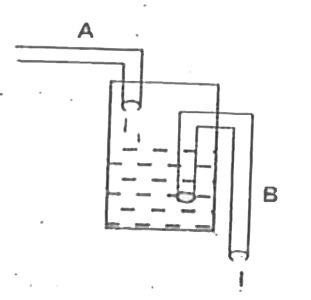Three tiny holes are made in an empty can at different levels, one over the other.

They are temporarily closed with an adhesive tap and then the can is filled with water. As the tapes are pulled out, water starts flowing out from the holes. It is observed that water flowing out from the lowest hole goes farthest and that from the uppermost hole nearest to the can (BE > BD > BC). Why? What does this experiment show ?
Pressure in a liquid increases with the increase in depth. Also, liquids exert pressure sideways and so on the walls of the can also
Similar Questions
Two tiny holes are made in a plastic bucket, one near the middle part and the other just above bottom.When this bucket is filled with water, the water rushes out from the bottom hole much faster than from the upper hole. What conclusion do you get from this observation ?
View SolutionAn empty plastic bottle is kept and three holes are made in it at the same height from the bottom of the bottle. Bottle is now filled with water. Water stands leaking out 'from the holes. Do the different stream of water coming out of the holes fall at the same distance from the bottle? What conclusion do you draw ?
 View Solution
View Solution
Knowledge Check
- Question 1 - Select One
The velocity of the water flowing from the inlet pipe is less than the velocity of water flowing out from the spin pipe B. Then
 Avariation of water level in vessel will be irregularBwater level will remains constant .Cthe water will perform periodic oscillation motionsDnone of the above
Avariation of water level in vessel will be irregularBwater level will remains constant .Cthe water will perform periodic oscillation motionsDnone of the above - Question 2 - Select One
A tank filled with fresh water has a hole in its bottom and water is flowing out of it. If the size of the hole is increased, then
Athe volume of water flowing out per second will decreaseBthe velocity of outflow of water remains unchangedCthe volume of water volume out per second remains zeroDBoth (b) and (c) - Question 3 - Select One
In a container, filled with water upto a height h, a hole is made in the bottom. The velocity of water flowing out of the hole is
Aproportional to hBproportional to h1/2Cproportional to h2Dindependent of h
A closed vessel is half filled with water. There is a hole near the top of vessel and air is pumped out from this hole.
View SolutionA large tank having a small hole at the bottom is filled with water to a height h. If the stream of water coming out of the hole is directed vertically upwards it will :
View SolutionA hole is made in the bottom of a container having water filled up to a height h. The velocity of water flowing out of the hole is :
View SolutionA hollow sphere is filled with water. It is hung by a long thread. As the water flows out of a hole at the bottom, the period of oscillation will
View SolutionA hollow sphere is filled with water through a small hole in it. It is then hung by a long thread and made to oscillate. As the water slowly flows out of the hole at the bottom, the period of osxillation of the sphere.
View Solution

